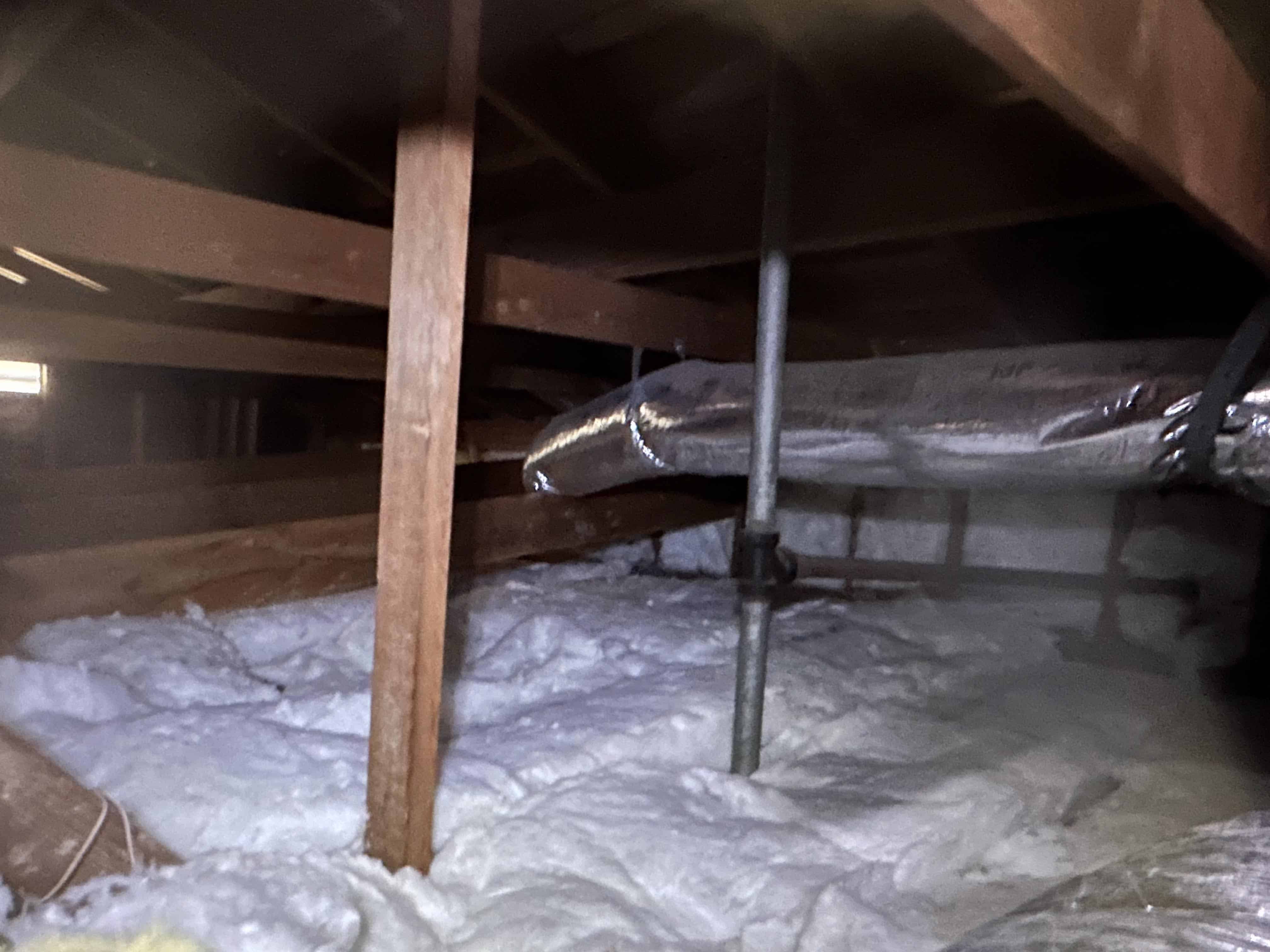Key Takeaways
- Adding the proper insulation to your walls can cut your energy loss by up to 30% and your power bills by 15% or more.
- Though blown-in wall insulation is better for retrofits, fiberglass wall insulation is a better choice for new builds.
- For the best safety and efficiency, wall insulation should only be installed by experts.
- If you have drafts, uneven temperatures, or high energy bills, it may be time to change your insulation.
- Upgrading wall insulation, especially with the help of a trusted contractor, makes the home more comfortable, improves the air quality, and saves money in the long run.
Want to save money on your energy bills while keeping your house warm all year? First, improve the insulation in your walls.
Did you know? According to a report by the U.S. Department of Energy, homes can lose a great amount of their energy through walls that aren’t insulated well. It’s time to check your wall insulation if you feel drafts, have high utility bills, or have trouble with indoor temperature swings..
In this guide, we will understand how proper insulation of walls can help with energy efficiency. So read to the end!
Why Insulation Matters More Than You Think
Insulating your walls does more than just keep you warm in the winter. It’s quiet, keeps cool air inside in the summer, and saves you money every month. If you properly insulate your walls, your HVAC system will work less, which will save you money on energy costs.
With the proper insulation, you can:
- Save up to 15% on your energy bills
- Make the air in your home better.
- Improve the overall comfort.
- Boost the value of your home
- Cut down on your carbon impact.
And it’s good for the environment too!
Types of Insulation You Can Choose
Fiberglass Insulation: A Budget-Friendly Classic
One of the most commonly used options is fiberglass wall insulation. It comes in rolls or batts and is made of fine glass fibers.
Benefits of Fiberglass Insulation:
- Not expensive
- Simple to install
- Not easily burned or damaged by water
- Widely available
But it needs to be installed correctly. Gaps or compressions can make it less valuable. When you handle it, you should always wear safety gear because the threads can hurt your eyes and skin.
Blown-In Insulation: Great for Existing Walls
You don’t have to tear down the drywall if you use blown-in wall insulation. For this method, small holes in the walls are used to blow loose insulation like cellulose or fiberglass into the spaces between the walls.
Pros of blown-in insulation:
- It’s great for remodeling jobs
- Fills holes and hard-to-reach places
- Quick installation (usually within a day)
- It makes insulation better.
If you search for “wall insulation near me,” you’ll find that many professionals now specialize in this method that doesn’t require any drilling.
How to Pick the Right Insulation for Your Walls
Every house is different. Here’s how to find the right person:

What is R-Value? It’s the insulation’s resistance to heat flow. The higher it is, the better.
Wall Insulation Installation: What to Expect
Hiring professionals for wall insulation installation makes sure it’s done right. Usually, this is what happens:
- Inspection: Professionals look at your walls and give you advice on the best way to do it.
- Preparation: The furniture is covered, and the old padding can be taken away.
- Installation: Depending on the type, either blown-in or batt insulation is put in place.
- Seal and Clean: Holes are sealed, the room is cleaned, and the insulation is checked.
Pro tip: Always choose qualified installers. This makes things safer and saves money in the long run.
Warning Signs You Need New Insulation
Look out for these warning signs:
- Different room temperatures
- Drafts around plugs or windows
- High bills for heating or cooling
- Walls with water or mold
- Infestations of rodents inside walls
Look for “wall insulation near me” to get help in your area if you see these signs.
Don’t Let Energy Drain Your Wallet!
Just by improving your insulation, you could save $200 to $400 a year. It’s time to act now. You are only one step away from comfort, savings, and peace of mind.
Comparison: DIY or Professional Help?
Let us compare the two choices:
DIY Pros:
- saves money
- Good for little jobs
DIY Cons:
- You need tools and safety gear to do it.
- It’s easy to miss spots or put it wrong
- Not a promise
Professional Pros:
- Work is guaranteed
- Installation that is quick and clean
- Coverage with the proper R-value
If you’re not skilled, it’s best to let professionals do the job of insulation installation.
Tips to Maximize Insulation Efficiency
To get the most out of your insulation, do the following:
- Find and fix air leaks before you insulate.
- Be sure to insulate the floors and attics as well.
- Keep HVAC filters clean for better movement.
- Find trouble spots with thermal imaging.
- Cover switch plates and plugs with foam pads to keep them warm.
These little things can make a big difference!
When Should You Replace Existing Insulation?
Over time, even the best shielding breaks down. Replace yours if it:
- Is over 15-20 years old.
- Shows signs of water damage
- Mold or mildew on it
- Has moved or sagged
- Pests have been chewed by pests.
Ready to Upgrade Your Wall Insulation?
It shouldn’t cost a lot to be comfortable. By insulating your wall, you save money, keep yourself warm, and be environment friendly. Do not wait too long if you want to use fiberglass wall insulation or blown-in insulation.
Looking for pros you can trust? Start with My Insulation Guy. They are known for installing insulation on the wall in a clean, quick, and reliable way. Visit our website or make your house better, warmer, and less expensive to heat and cool.
FAQs
Q1: How much does it cost to protect walls?
The price depends on what kind of home you have and how big it is. You can expect to pay between $1.00 and $2.50 per square foot.
Q2: Can I put in blown-in insulation without taking down the drywall?
Yes! It is blown into the wall through small holes that are made in it. After that, the holes are closed up.
Q3: Fiberglass or cellulose insulation?
There are pros and cons to both. It costs less to use fiberglass. Cellulose is better at keeping air out.
Q4: How long does insulation in walls last?
Depending on the quality and the climate, most types of insulation last between 20 and 30 years.
Q5: Will the new insulation really make my energy bills go down?
Of course. With the proper insulation, you can save up to 15% on your heating and cooling bills.

